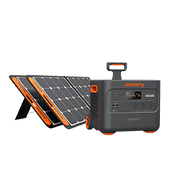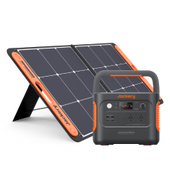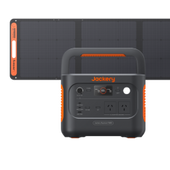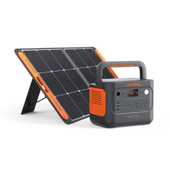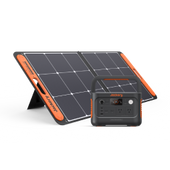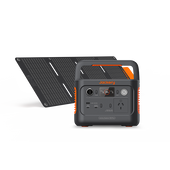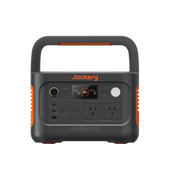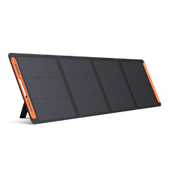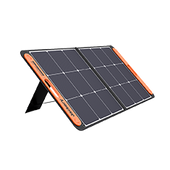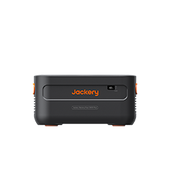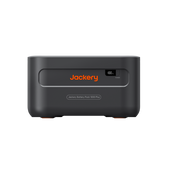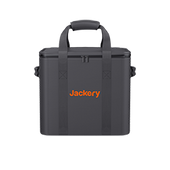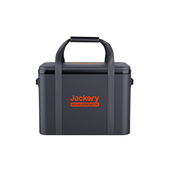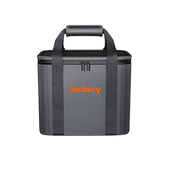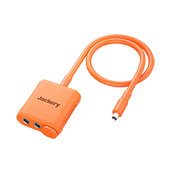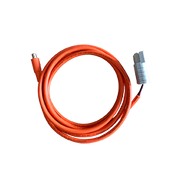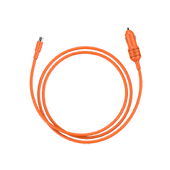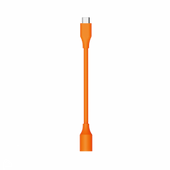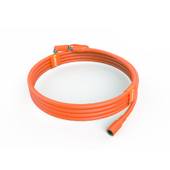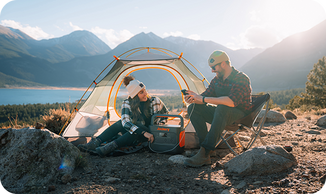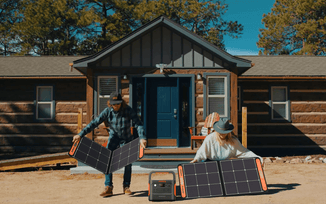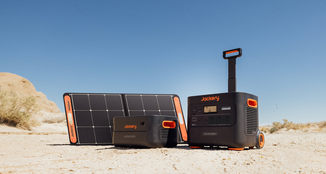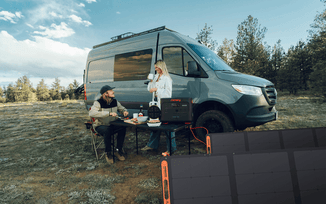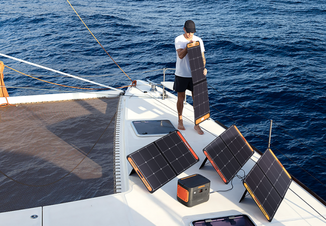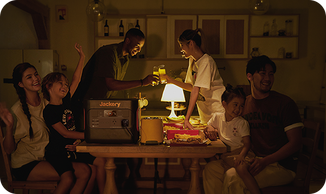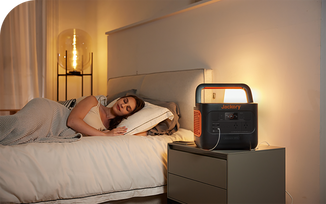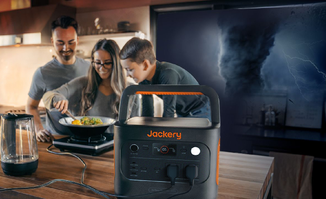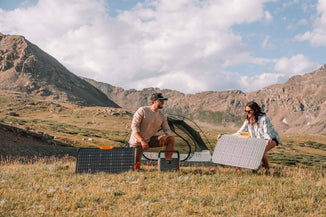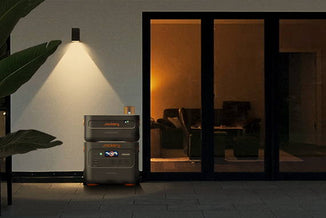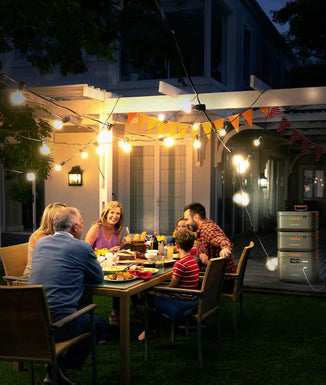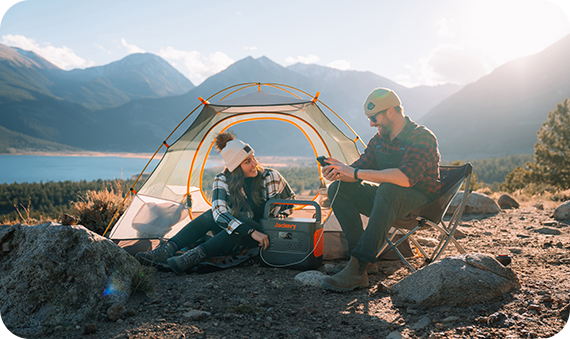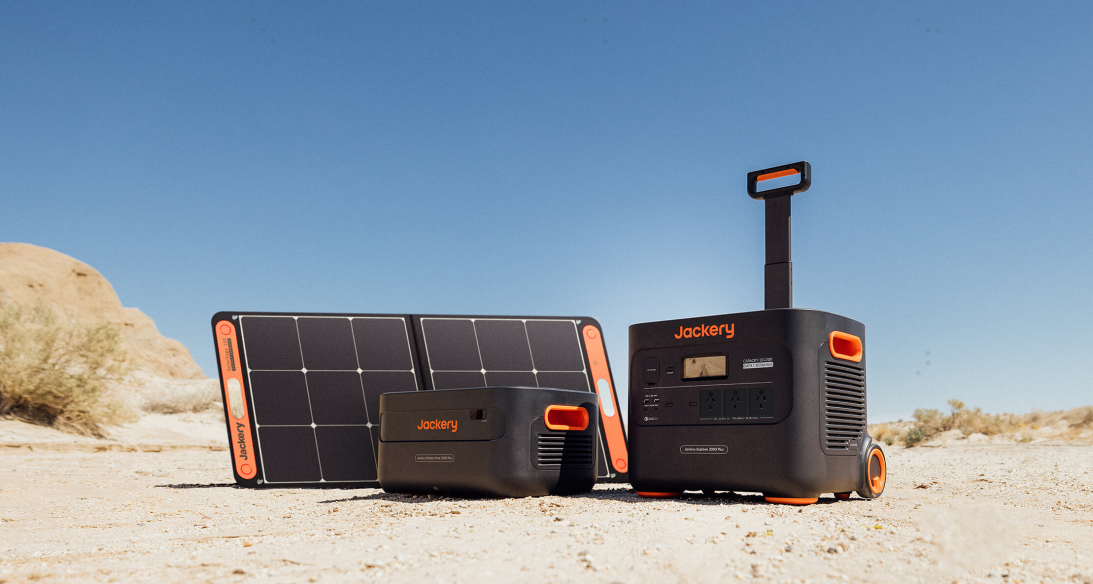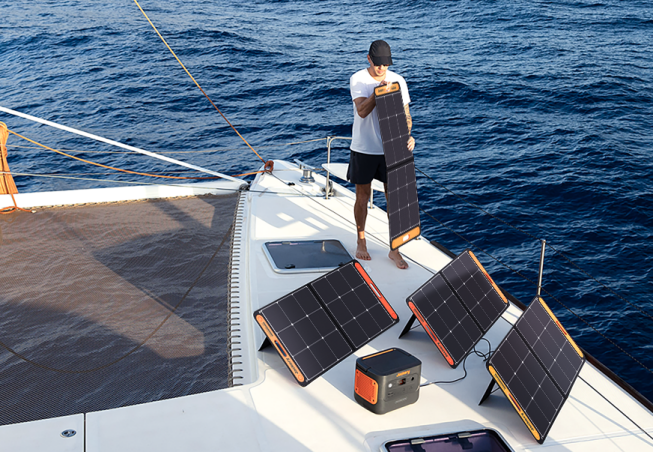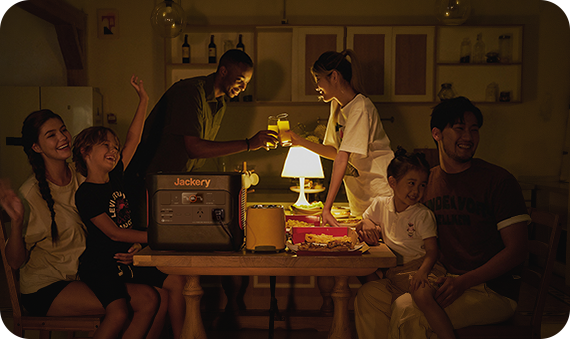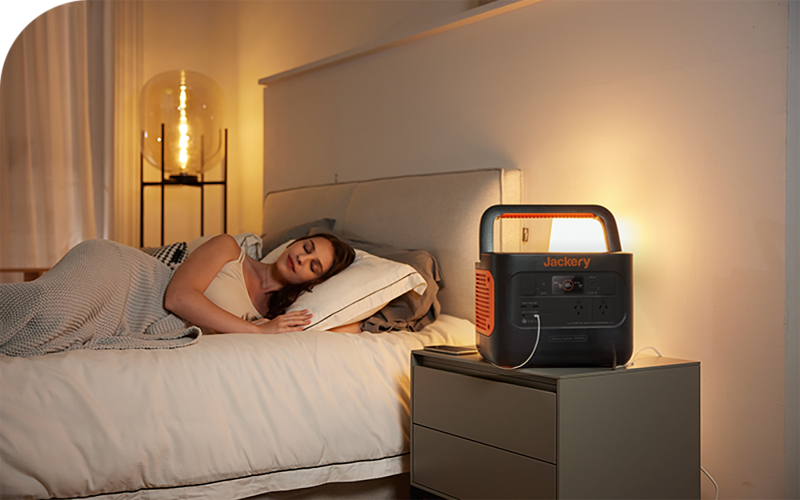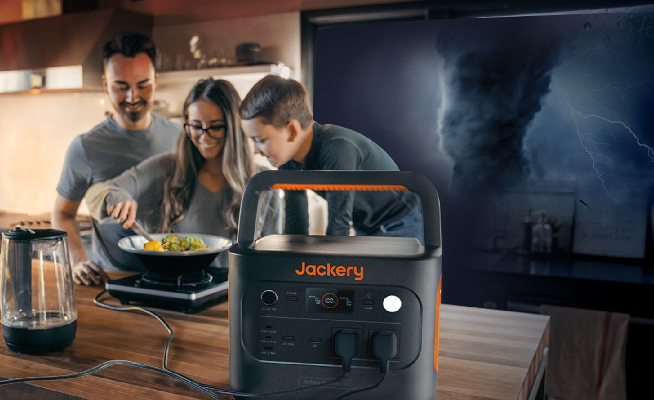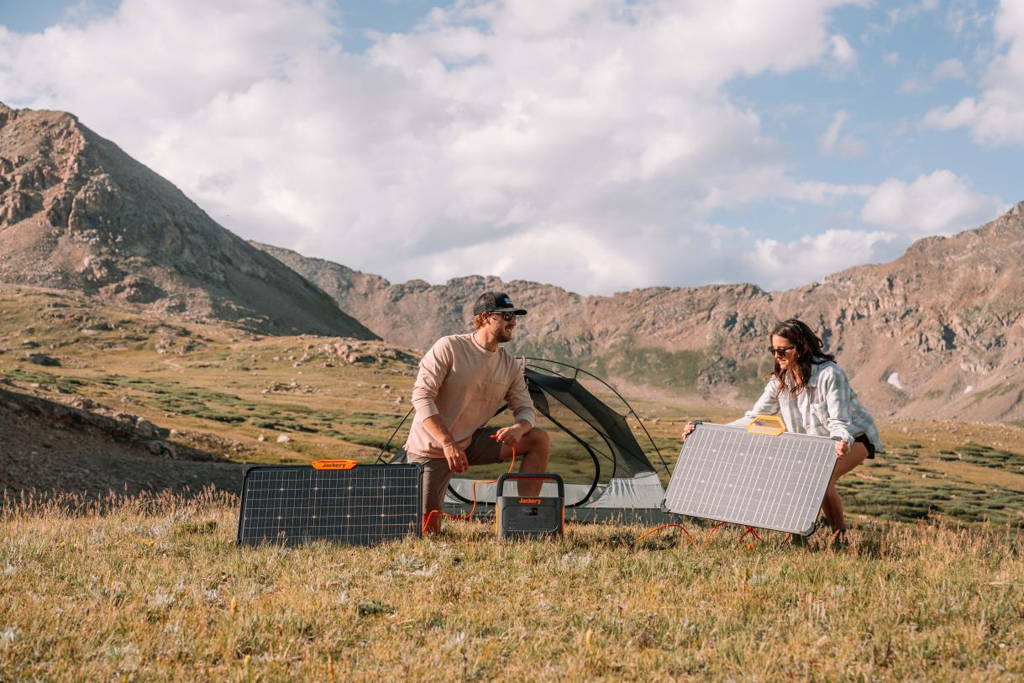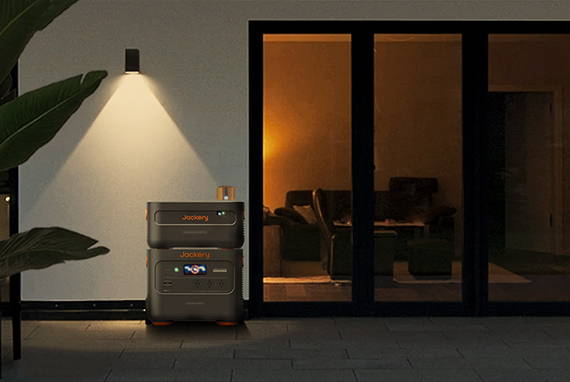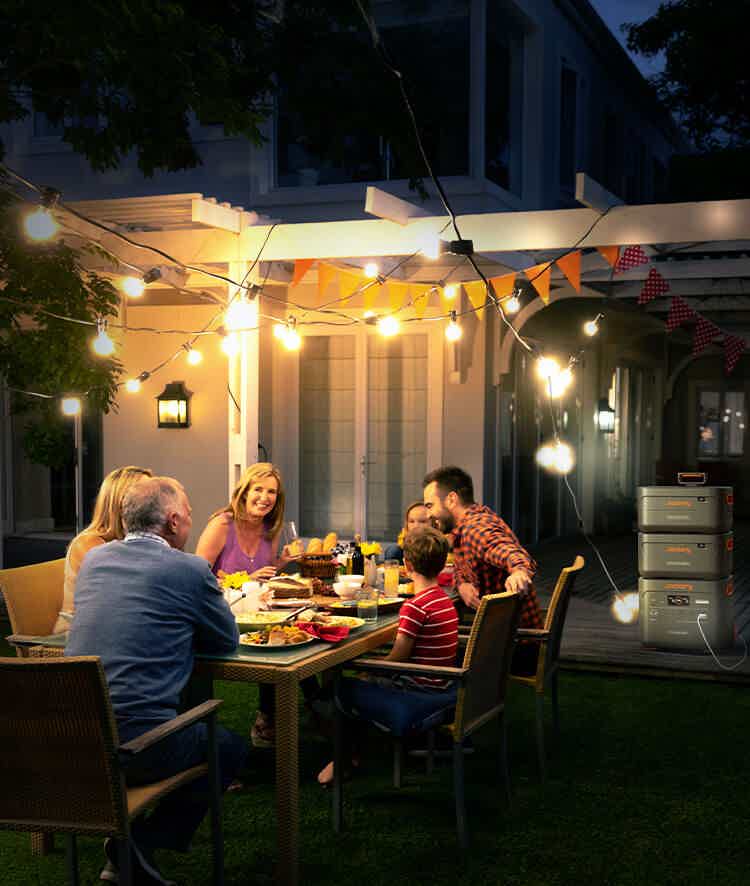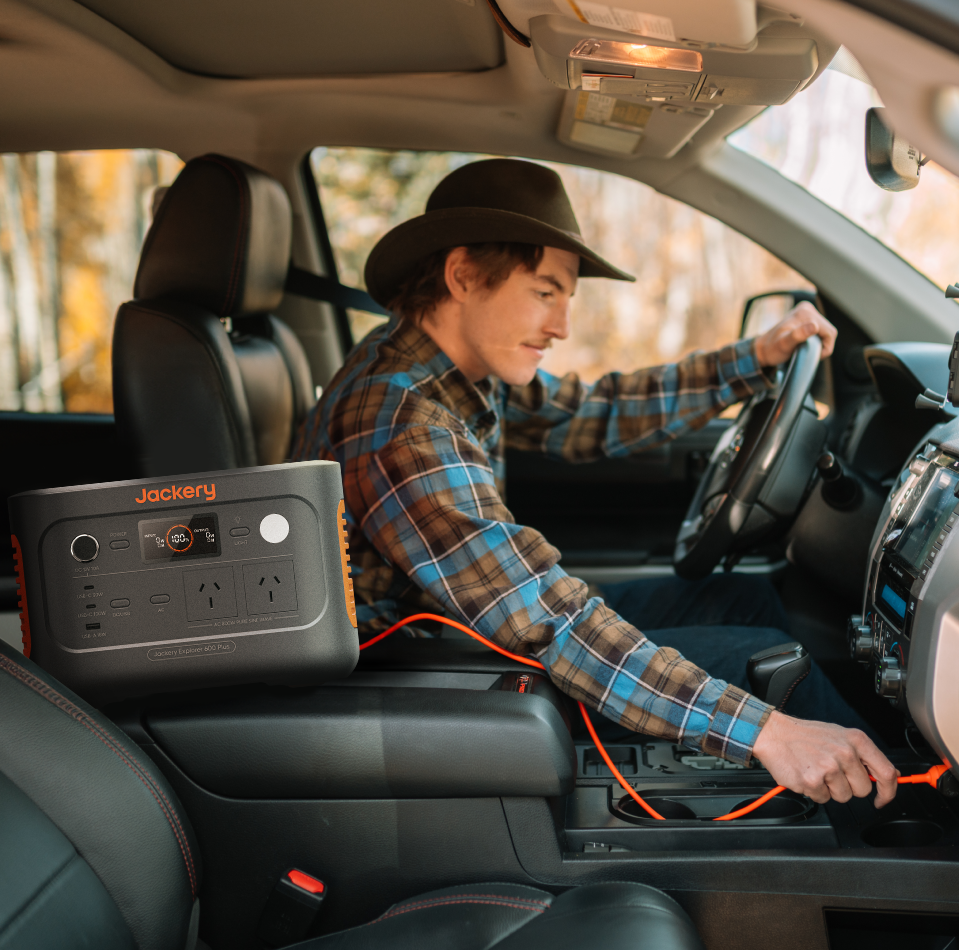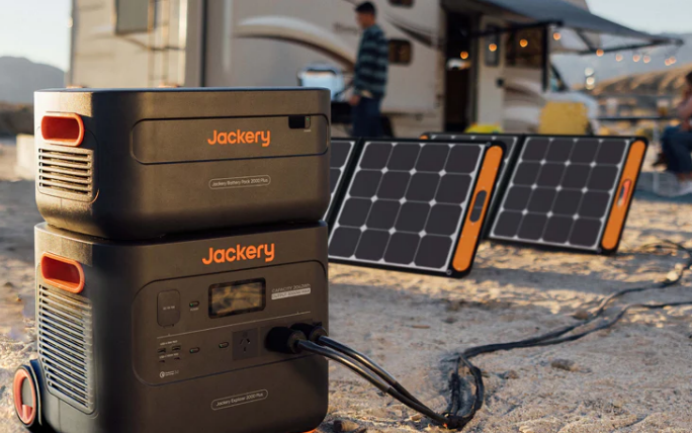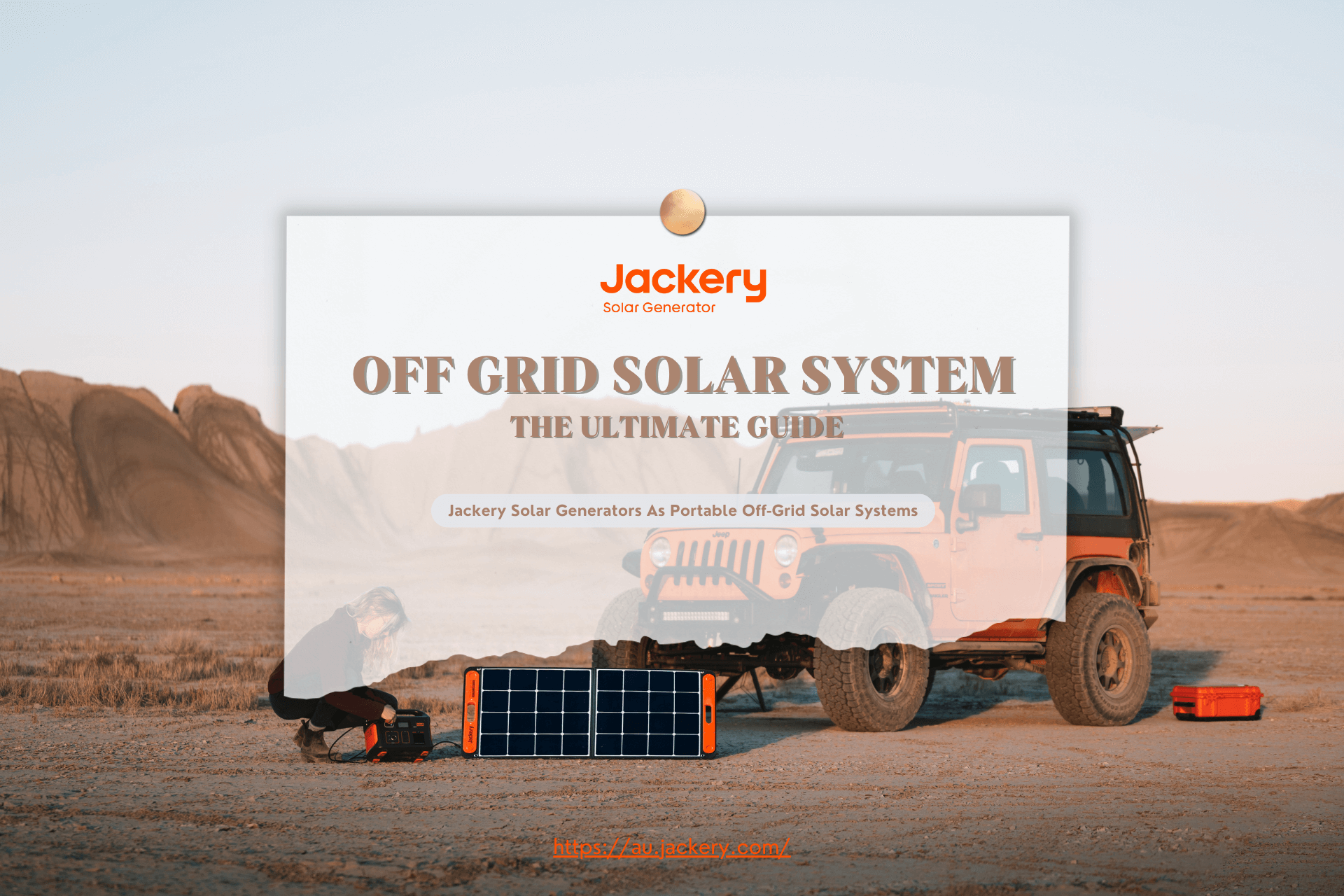|
Key Takeaways: |
|
- New Zealand's road rules are similar to Australia's, but always drive on the left side. - Pack weather-resistant gear, as New Zealand's weather can change rapidly. - Always perform pre-ride checks to ensure your bike is in top condition. - Accommodations in New Zealand range from motels to campgrounds, many with secure motorcycle parking - New Zealand offers both challenging roads and scenic routes perfect for motorcycle touring. - We recommend Jackery Solar Generator 300 Plus to power outdoor electronics and devices with higher portability and capacity. |
Why Go on a Motorcycle Tour in New Zealand?
New Zealand is often regarded as one of the world's best destinations for motorbike touring. Its stunning vistas, well-maintained roads, and minimal traffic make it an excellent destination for riders looking for adventure and pleasure. Motorcyclists can enjoy a broad range of surroundings in short distances, whether they weave through the rocky mountain passes of the South Island or cruise down the North Island's subtropical coastlines.
Motorcycle tours in New Zealand take numerous forms, ranging from entirely led group trips to self-directed experiences with pre-planned itineraries and accommodations. Riders may anticipate passing through classic destinations like the Southern Alps, Fiordland, the Coromandel Peninsula, and Rotorua's geothermal wonders. Each route has a unique combination of exhilarating turns, panoramic scenery, and cultural highlights.
Popular New Zealand motorcycle tour companies such as Paradise Motorcycle Tours, South Pacific Motorcycle Tours, and Epic Ride cater to a variety of riding styles and tastes. They frequently provide high-end motorcycles such as BMW, Harley-Davidson, and Triumph and rider support services such as GPS navigation, luggage transportation, and backup vehicles.
In addition to the journey, New Zealand offers inviting communities, Māori cultural experiences, and outdoor activities such as whale watching and wine tasting to enhance the touring experience. Because of its small size, warm temperature, and remarkable diversity, New Zealand is an ideal location for motorcyclists seeking an unforgettable experience across two gorgeous islands.
The Best Motorcycle Routes in New Zealand
New Zealand is known for its breathtaking landscapes, and there's no better way to see them than on two wheels. Whether you're looking for coastal cruising, mountainous difficulties or hidden rural jewels, New Zealand's North and South Islands have some of the best motorcycle touring roads in the world.

South Island Routes
Southern Scenic Route (Invercargill to Dunedin)
Length: Approx. 610 km
Highlights: Curio Bay petrified forest, Nugget Point Lighthouse, Otago Peninsula.
The Southern Scenic Route offers countless views of the ocean, thick forests, and waterfalls as it follows the untamed southern coastline. It travels through the breathtaking Catlins region, which is home to old petrified forests, sea lions, and penguins. The peaceful traffic and gently sloping roads combine to create a tranquil and remarkable journey.
Arthur's Pass (Christchurch to Greymouth)
Length: Approx. 240 km
Highlights: Otira Viaduct, Arthur’s Pass Village, Devil’s Punchbowl Waterfall.
Arthur's Pass, which rises steeply into the Southern Alps, is one of the most thrilling mountain crossings in New Zealand. Anticipate stunning scenery, steep hills, and tight turns. Keep an eye out for sly kea parrots that might fly down to check your bike.
Greymouth to Fox Glacier (via SH6)
Length: Approx. 200 km
Highlights: Hokitika Gorge, Franz Josef and Fox Glaciers, Lake Matheson.
Travel along the verdant West Coast of New Zealand, past untamed beaches, towering mountains, and ancient rainforests. The trip offers striking contrasts between tranquil glacial scenery and rocky coastlines.
Queen Charlotte Drive (Havelock to Picton)
Length: Approx. 40 km
Highlights: Mahau Sound viewpoints, Governor’s Bay, Picton Harbour.
Despite its brevity, this route is breathtaking as it winds its way along the Marlborough Sounds. It is a technical and beautiful delight for riders, featuring tight turns, a native bush, and constant sea views from every direction.
Crown Range Road (Queenstown to Wanaka)
Length: Approx. 70 km
Highlights: Crown Range summit lookout, Cardrona Hotel, Lake Wanaka.
This 1,076-meter-high primary road is the highest in New Zealand. There are stunning alpine views and tremendous switchbacks along the path. If you're in the vicinity of Queenstown or Wanaka, you absolutely must ride it.
North Island Routes
Auckland to Wellsford (via SH16)
Length: Approx. 80 km
Highlights: Muriwai Beach, Gannet Colony, Puhoi Historic Village, and Matakana wineries.
The quieter and more picturesque SH16 is a great way to get away from the urban sprawl of Auckland. The fact that this path travels past vineyards, rolling farmland and craggy coastline makes it an ideal choice for a day ride that is both restful and enjoyable.
Gisborne to Napier (via Tiniroto Road)
Length: Approx. 215 km
Highlights: Rere Falls and Rockslide, Te Urewera National Park, Art Deco architecture in Napier.
There is a rural inland route that is a rider's dream, with winding turns, isolated valleys, and a genuine feeling of escape it offers. Taking a diversion to visit Rere Falls and the natural waterslide is strongly recommended.
Coromandel Loop (via SH25)
Length: Approx. 250 km (full loop)
Highlights: Thames Coast Road, Whangapoua Beach, Hot Water Beach, Cathedral Cove.
The Coromandel Loop, one of the most well-known rides in New Zealand, blends quiet beaches, winding coastal roads, and verdant forest landscapes. It's the ideal balance of relaxed beach cruising and demanding riding.
Forgotten World Highway (Taumarunui to Stratford)
Length: Approx. 150 km
Highlights: Whangamōmona Republic, Moki Tunnel (“Hobbit’s Hole”), Tangarakau Gorge.
This is one of the most daring rides in New Zealand because of its remote location, difficult terrain, and the absence of petrol stations anywhere along the route. The rider will find it to be a true challenge because it features gravel stretches, old tunnels, and historical landmarks.
East Cape Loop (Opotiki to Gisborne)
Length: Approx. 330 km
Highlights: East Cape Lighthouse, Tikitiki Māori Church, remote black sand beaches.
This isolated coastline trip offers breathtaking views of the ocean, small rural communities, Māori culture, and the opportunity to see the East Cape Lighthouse, New Zealand's easternmost point. Because there aren't many services, carefully plan your fuel stops.
Best Destinations for Motorcycle Tours in New Zealand
New Zealand is a motorcyclist's paradise with everything from winding coastal highways to exhilarating mountain climbs. Every island has its own personality, along with breathtaking scenery, exciting local culture, and thrills that will never be forgotten. These are the best places every motorcyclist should visit, whether seeking untamed nature or picturesque coastal cruising.

South Island Top Destinations
Queenstown and Central Otago
Queenstown, frequently referred to as the "Adventure Capital of the World," is an ideal place to begin biking on the South Island. The neighbouring Crown Range route is New Zealand's highest main route, with tight switchbacks, historic sites like the well-known Cardrona Hotel, and breathtaking mountain views. Highlights of Central Otago's broad, undulating terrain include Cromwell and Bannockburn's picturesque wineries and Clyde's gold-mining town. These areas are ideal for cruising.
Why Ride Here:
Epic alpine scenery and historic mountain roads.
Adventure activities, vibrant nightlife, and gourmet dining.
Ideal for day trips and longer loop rides.
West Coast and Glaciers (Greymouth to Fox Glacier)
Travelling along State Highway 6 on the west coast of the South Island is an exciting and breathtaking experience. This section features lush rainforest, tumbling surf, and tall Greymouth to Fox Glacier cliffs. Riders can visit Franz Josef and Fox Glaciers, two unique locations where glaciers meet the rainforest, and explore the well-known Hokitika Gorge with its turquoise waterways.
Why Ride Here:
Constantly changing scenery: beaches, rainforest, glaciers.
Quiet, less-travelled roads perfect for motorbikes.
Iconic natural attractions and authentic small towns.
Fiordland and Milford Sound
The drive to Milford Sound from Fiordland National Park is just as memorable as the destination. Travellers on State Highway 94 (Milford Road) pass via glistening lakes, historic rainforests, and breathtaking landscapes. The Homer Tunnel, a 1.2 km tiny tunnel carved through solid rock that leads to the spectacular fjord sceneries of Milford Sound, is an exhilarating experience.
Why Ride Here:
Remote and rugged — actual wilderness riding.
One of the most scenic highways in the world.
Stunning photo stops like Mirror Lakes and The Chasm.
North Island Top Destinations
Coromandel Peninsula
State Highway 25's Coromandel Loop is a cyclist's dream come true. It offers tough riding as well as a wealth of magnificent scenery, with narrow, winding roads hugging rocky coastlines, secret beaches, and verdant forests. The charming hamlet of Coromandel, the well-known Hot Water Beach, where you may build your own hot pool, and Cathedral Cove's breathtaking sea arch are must-see locations.
Why Ride Here:
Some of the best coastal riding in New Zealand.
A mix of beautiful beaches, forested hills, and relaxed towns.
Perfect for a one- or two-day ride from Auckland.
Rotorua and Taupō
With its geothermal wonderlands, massive volcanic lakes, and vibrant Māori culture, the Central North Island offers a singular experience. The hot geysers and gushing mud pools of Rotorua are of unearthly quality. The journey to Lake Taupō, the biggest lake in New Zealand, provides expansive vistas and a wide, level route ideal for leisurely cruising.
Why Ride Here:
Unique geothermal landscapes unlike anywhere else.
Smooth, flowing roads perfect for intermediate riders.
Cultural experiences and excellent lakeside stops.
Forgotten World Highway (Taumarunui to Stratford)
Many people refer to this isolated 150-kilometer highway (State Highway 43) as New Zealand's "last frontier." It's a true backcountry adventure, with winding, small roads, rough terrain, and historic communities like Whangamōmona (which famously proclaimed itself a republic). This is riding at its most real, so be prepared for unsealed portions, dim tunnels, and minimal indications of civilisation.
Why Ride Here:
Rugged, adventurous riding through isolated landscapes.
Historic sites and quirky local culture.
Ideal for riders seeking a challenge and a real escape.
Getting Ready for New Zealand Motorcycle Touring
A thrilling way to take in New Zealand's breathtaking scenery, from coastal highways to mountain passes, is to go on a motorbike tour. But for a smooth and pleasurable trip, planning is essential. The ideal time to travel, how to organise your trip, and what necessary equipment you'll need are all covered in this book. Your motorbike adventure in New Zealand will be remembered if you prepare properly.

Tip 1: Best Times for Motorcycle Touring in New Zealand
In New Zealand, this is the busiest time of year for travel. Expect extended daylight hours, smooth roads, and mild temperatures between 18°C and 25°C. It's perfect for travelling large distances and seeing both islands.
The mild weather in springtime ranges from 10°C to 18°C. It's a lovely time to explore because the roads are calmer, and the landscape is lush and flowering.
Especially in Central Otago and the Southern Alps, autumn offers beautiful autumn leaves, fresh air and colder temperatures. If you like fewer crowds and gorgeous scenery without the summer heat, now is a great time to ride a motorbike.
Roads are quieter in the winter, but snow may close some mountain routes, particularly in the South Island. This is ideal for seasoned riders seeking a more difficult experience because temperatures in the South can fall below 5°C. During this period, winter clothing is essential.
Tip 2: Plan Your Motorcycle Tour
Rent a Motorcycle: NZ Motorbikes, Epic Ride, and Paradise Motorcycle Tours are just a few of the respectable motorcycle rental businesses in New Zealand. They provide a variety of bikes that are appropriate for different types of terrain and tastes. To guarantee availability and get the lowest prices, it's important to reserve your motorbike well in advance, particularly during busy times of the year.
Route Planning: Consider iconic routes like the Southern Scenic Route, the Forgotten World Highway, and the Coromandel Loop. These routes offer a mix of scenic beauty and engaging riding experiences.
Navigation Tools: Utilise GPS devices or smartphone apps like Google Maps or Maps.me for navigation. Some rental companies provide pre-programmed GPS units with suggested routes.
Accommodation: Plan your overnight stops in advance, especially during peak seasons. Options range from motels and bed & breakfasts to campgrounds.
Tip 3: Pack Essential Gear
The importance of proper equipment and gear for motorcycle touring cannot be overstated, as it directly impacts a rider's safety, comfort, and overall experience.
Protective gear such as a DOT-certified helmet, armoured jacket and pants, sturdy gloves, and over-the-ankle boots are crucial for minimising injuries in the event of an accident. These items are designed to protect against abrasion, impact, and other hazards encountered on the road.
Riding Gear
Helmet: A full-face helmet is recommended for safety and comfort.
Jacket and Pants: Wear protective gear, preferably with armour, to safeguard against abrasions.
Gloves: Pack both warm and cold-weather gloves to adapt to varying temperatures.
Boots: Sturdy, waterproof boots with ankle support are essential for comfort and protection.
Weather Gear
Rain Gear: Waterproof jackets and trousers are crucial, as New Zealand’s weather can be unpredictable.
Layered Clothing: Pack thermal layers for warmth, especially when riding in cooler regions or early mornings.
Motorcycle Essentials
Toolkit: Carry a basic toolkit for minor repairs and adjustments.
First Aid Kit: Include essentials like bandages, antiseptic wipes, and pain relievers.
Locks: Use a sturdy lock when leaving your motorcycle unattended.
Fuel: Consider carrying a small fuel can for remote areas, as some stretches between petrol stations can be long.
Electronics and Navigation
Smartphone: Useful for navigation, emergency contact, and capturing photos.
Jackery Solar Generator 300 Plus: Ensure your devices stay charged during long rides.
Mounts: Use a secure mount for your smartphone or GPS device for easy access.

Documents
Motorcycle License: Ensure you have a valid motorcycle license. An International Driving Permit (IDP) may be required if your license is not in English.
Insurance: Purchase comprehensive motorcycle insurance that covers theft, damage, and liability.
Travel Insurance: Opt for travel insurance that includes motorcycle riding activities.
Visa: Check if you require a New Zealand Electronic Travel Authority (NZeTA) before arrival.
Tip 4: Riding in New Zealand
Make sure your licence is appropriate for the size of the motorcycle you plan to ride. Bring an official translation or an International Driving Permit (IDP) if your licence isn't in English. When riding, you must always have your licence with you.
Road Rules: Drive on the left side of the road. Before you ride, familiarise yourself with New Zealand's road signs and traffic laws.
Fuel Up: Many rural towns have limited petrol stations, so top up your tank whenever you can, especially when exploring remote areas like the Forgotten World Highway.
Weather Awareness: The weather in New Zealand is variable, particularly in the mountains. Keep an eye on the weather forecast and avoid riding in hazardous conditions such as heavy rain or snow.
Wildlife: Be cautious of wildlife on the roads, particularly in rural and forested areas.
Jackery Solar Generator 300 Plus for Motorcycle Tours
The Jackery Solar Generator 300 Plus could be a valuable companion for New Zealand motorcycle tours due to its portability blend, sufficient power for essential devices, and solar charging capability.

Portability: Weighing around 8.27 lbs (about 3.75 kg), the Explorer 300 Plus is relatively lightweight and compact (9.1 x 6.1 x 6.6 inches), making it easier to pack and transport on a motorcycle compared to larger power stations. Some bundles include a foldable 80W solar panel that is also designed with portability in mind.
Essential Power for Motorcycle Tours: With a 288Wh capacity and a 300W AC output (600W peak), it can power or charge essential devices you'd likely bring on a motorcycle tour, such as smartphones, GPS units, cameras, small lights, and even charge a drone or power a mini fridge for a short period.
Recharging in Multiple Ways: The ability to recharge via solar panels (especially when purchased as a bundle) offers a degree of energy independence, which can be beneficial when camping or in areas with limited access to mains power.
This allows you to replenish the battery during the day while you're stopped, ensuring you have power in the evenings or for the next day's journey. Besides solar, it can also be charged via an AC outlet (around 2 hours for a full charge) or a car charger (around 5.5 hours), providing flexibility depending on your situation.
Safety and Durability: The Explorer 300 Plus often features a LiFePO4 battery known for its longer lifespan and enhanced safety features. It also includes a Battery Management System (BMS) for added protection. Some reviews mention its solid build quality and quiet operation.
|
Jackery Solar Generator 300 Plus Working Hours |
|
|
Drone (90W) |
5 Times |
|
Camera (8.4W) |
12 Times |
|
Phone (29W) |
13 Times |
|
Flashlight (5W) |
22H |
|
Smart Speaker (10W) |
18H |
(*The working hours are only for reference; the actual working hours depend on your usage.)
Accommodation and Camping in New Zealand
There are several possibilities for accommodations that accommodate motorbike riders in New Zealand, which is a motorcyclist's paradise. New Zealand has lodging options to suit any rider's taste and price range, whether they are cosy motels, picturesque campgrounds, or bike-friendly lodgings.
Accommodation Options
Motels and Hotels
New Zealand has a great selection of hotels and motels, particularly in towns along well-travelled motorbike routes. Motorcycles are welcome at many motels, which provide safe parking, handy locations, and tidy, pleasant rooms. There are motels in well-known locations like Queenstown, Rotorua, and Wellington that extend a warm welcome to motorcycle riders.
Benefits:
Secure, off-street parking for motorcycles
Convenient for resting after a long ride
Many motels have bike-cleaning facilities
Bed and Breakfasts (B&Bs)
Bed & Breakfasts are an excellent option for a more individualised touch. Many provide comfortable lodging, filling breakfasts, and opportunities to meet locals. For motorcycle riders who prefer a quiet, local experience, some B&Bs are situated along picturesque routes.
Benefits:
Homely atmosphere with the chance to meet locals
Often located in picturesque areas
Breakfast included to fuel up for the day’s ride
Motorcycle-Friendly Accommodation Providers
Some businesses cater exclusively to motorcycle riders, providing unique features, including secure parking, motorbike washing stations, and even packages tailored to individual riders. When making your reservation, look for lodging that is "motorcycle-friendly."
Camping for Motorcycle Riders
New Zealand has many ideal campgrounds for motorcycle riders who love camping or are on longer excursions. Numerous campgrounds are located in picturesque areas, providing access to the outdoors and stunning views.
Holiday Parks
Popular vacation parks in New Zealand have both powered and unpowered camping and tent spaces. Typically, these parks provide amenities like kitchens, laundry rooms, and showers. They offer excellent value for motorcycle riders who want to enjoy the outdoors without compromising comfort.
Campsites provided by the Department of Conservation (DOC) are generally inexpensive and provide only the most fundamental amenities. These campsites can be found in some of the country's most beautiful regions. Riders who are searching for a more rugged and nature-focused experience will find that they are a fantastic recommendation.
Benefits:
Affordable camping options
Good facilities (kitchens, showers, laundry)
Scenic locations often near lakes, beaches, or national parks
Backcountry Camping
New Zealand provides wilderness camping in isolated areas for the more daring rider. Since these campsites are frequently reachable by bicycle, you can explore the nation's untamed landscapes and isolated regions.
The New Zealand Motorhome and Caravan Association (NZMCA) campsites offer a network of backcountry and basic campsites for those wanting to truly experience the wilderness.
Benefits:
Access to some of New Zealand’s most beautiful and untouched landscapes
Remote, peaceful camping experience
Ideal for off-the-beaten-path explorers
Secure Your Motorcycle: Always choose campsites with secure parking or bike storage. If security isn't guaranteed, consider locking your bike with a high-quality lock or parking it in a well-lit area.
Pack Light, Pack Right: Consider lightweight gear and weather-resistant clothing when camping. The weather in New Zealand can be unpredictable, especially in remote areas, so make sure to pack for all eventualities (rain, wind, sun).
Go to Campsites with Amenities: Plan your stops around campsites with basic amenities like showers and restrooms if you travel through more rural areas. Many holiday parks offer motorcycle wash stations, which will help you clean off any road grime before you settle in for the night.
Safety Tips for New Zealand Motorcycle Tours
Motorcycle travel across New Zealand is an adventure that will never be forgotten, but the enjoyment of the trip depends on safety. Here are some easy yet crucial pointers to help you maximise your ride and stay safe.

Tip 1: Know the Road Rules
Keep in mind that cars in New Zealand drive on the left side of the road, particularly when you're at an intersection. The usual speed restriction on wide roads is 100 km/h; in urban areas, it is 50 km/h. Always yield to cars approaching from the right at intersections and abide by traffic signs. Use the appropriate passing lanes and ensure it's safe to pass.
Tip 2: Be Ready for Changing Weather
New Zealand's weather can be erratic, particularly in the mountains and along the coast. Reduce your speed if it starts to rain because the roads may get slick. Be ready to lean against the wind to keep your balance because it can be rather powerful in some places. Additionally, layering your clothes in cooler climates will help you stay comfortable all day.
Tip 3: Gear Up for Safety
Always wear the appropriate clothing, such as strong boots, gloves, a protective jacket, and a full-face helmet. It's also a good idea to wear hi-visibility gear to help other drivers see you, especially in bad weather or low light levels. Remember that having waterproof clothing is crucial if you find yourself in an unexpected downpour.
Tip 4: Do the Pre-Ride Checks
Take a moment to inspect your bike before you go. Make sure your tyres, brakes, and lights are in good shape. Additionally, make sure you have adequate fuel on your bike for the journey. By performing these minor checks, you can guarantee a smoother ride and prevent breakdowns.
Tip 5: Stay Alert
Be mindful of your surroundings and keep your eyes on the road. Because the roads in New Zealand are frequently curving, be cautious when turning turns. Keep a safe distance from other cars, and keep in mind that the best way to stay safe when riding is to stay within your limitations.
FAQs about the New Zealand Motorcycle Tours
The following are the frequently asked questions about motorcycle tours in New Zealand.
1. Is New Zealand good for motorcycles?
Of course. New Zealand has some of the world's most beautiful and varied cycling routes, from alpine passes to coastal highways. The nation is perfect for both experienced riders and touring aficionados due to its well-maintained roads, low traffic density, and vibrant motorcycling culture.
2. How much does it cost to rent a motorcycle in New Zealand?
The bike type and rental length determine the cost of renting a motorbike in New Zealand. For instance, a Honda CB500X may cost about €84 per day, whilst a BMW R1250GS might cost about €168. Insurance, panniers, and a daily mileage allotment are usually included in these rates.
3. What is the most popular motorcycle in New Zealand?
One of the best-selling motorcycles in New Zealand is the Yamaha Tenere 700. Because of its adaptability, it can be used for both off-road excursions and on-road tours, which appeals to riders looking for a balance between comfort and performance.
4. Can I take my motorcycle to New Zealand for a holiday?
Yes, you are exempt from paying duty for a maximum of 12 months when you temporarily import your motorbike into New Zealand. Although complete New Zealand registration is unnecessary for this straightforward process, your bike must adhere to certain compliance and biosecurity requirements.
5. What is the most bike-friendly city in New Zealand?
Christchurch is well-known for its bike-friendly infrastructure, which includes several bike lanes, bike paths, and an active local cycling community. The city is a famous cycling destination since it prioritises environmentally friendly transportation and urban development.
Final Thoughts
For motorcyclists looking for excitement and breathtaking beauty, a motorcycle tour in New Zealand is a dream come true. You may guarantee a safe and pleasurable trip by being aware of the local traffic laws, planning for different weather conditions, and bringing the appropriate equipment. Every turn offers something fresh, whether you're riding through the magnificent mountains of the South Island or the vineyards of the North Island.

